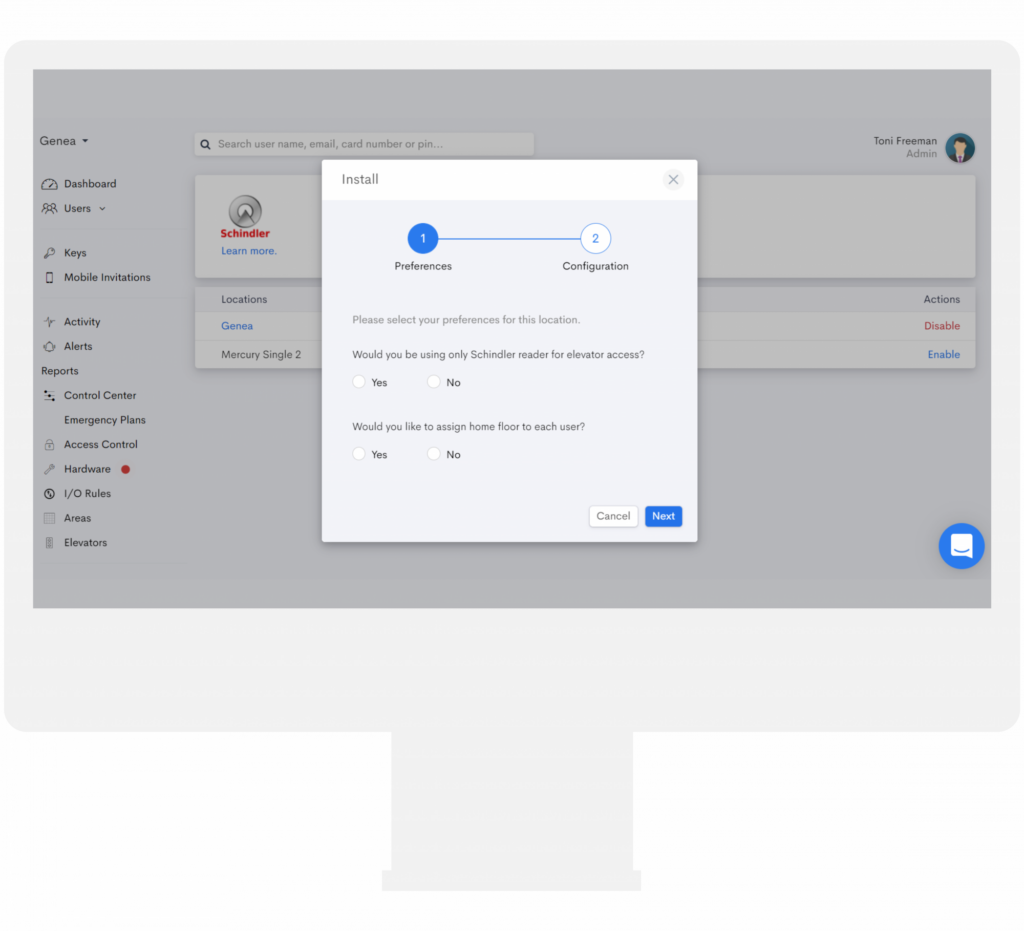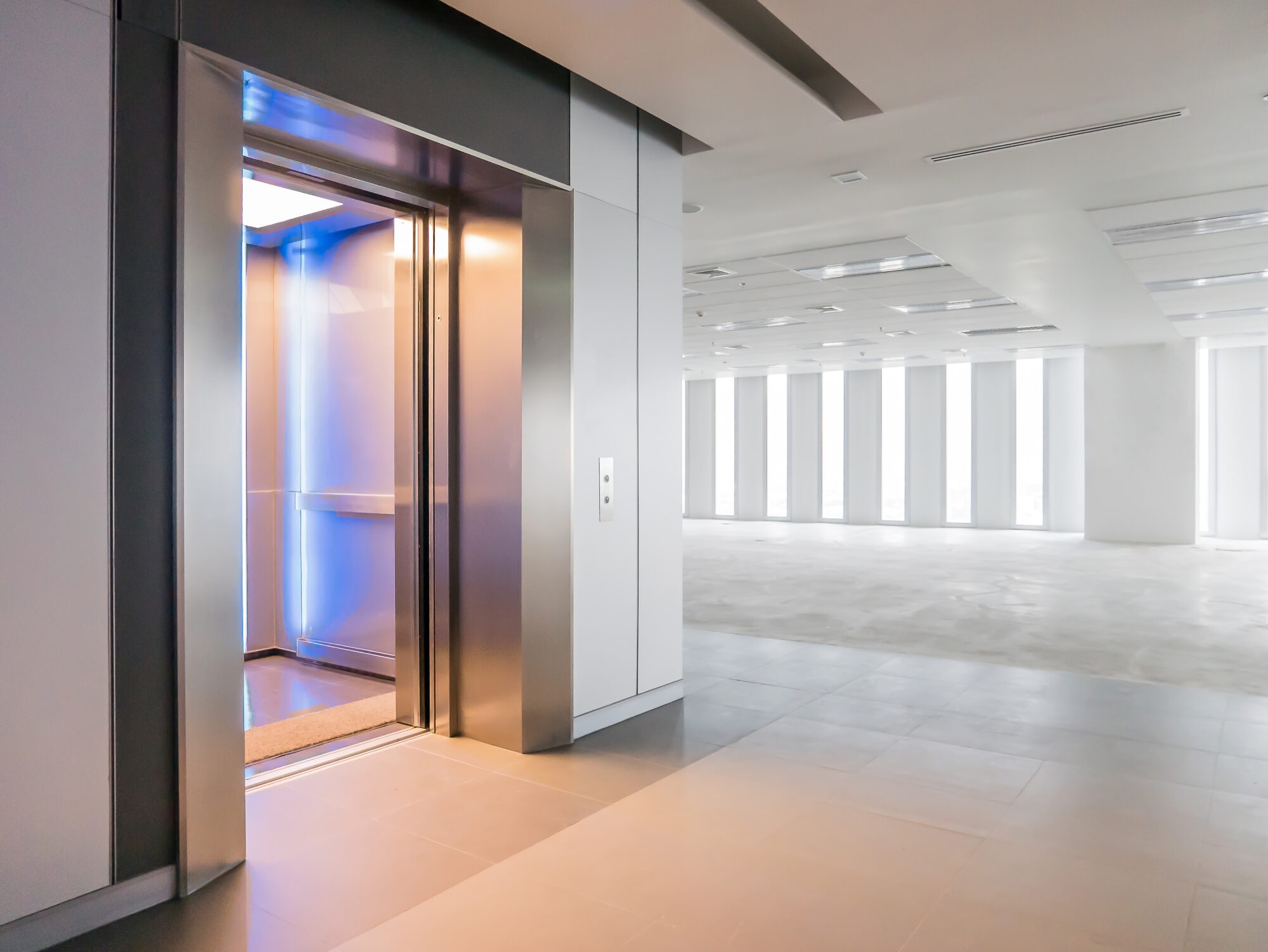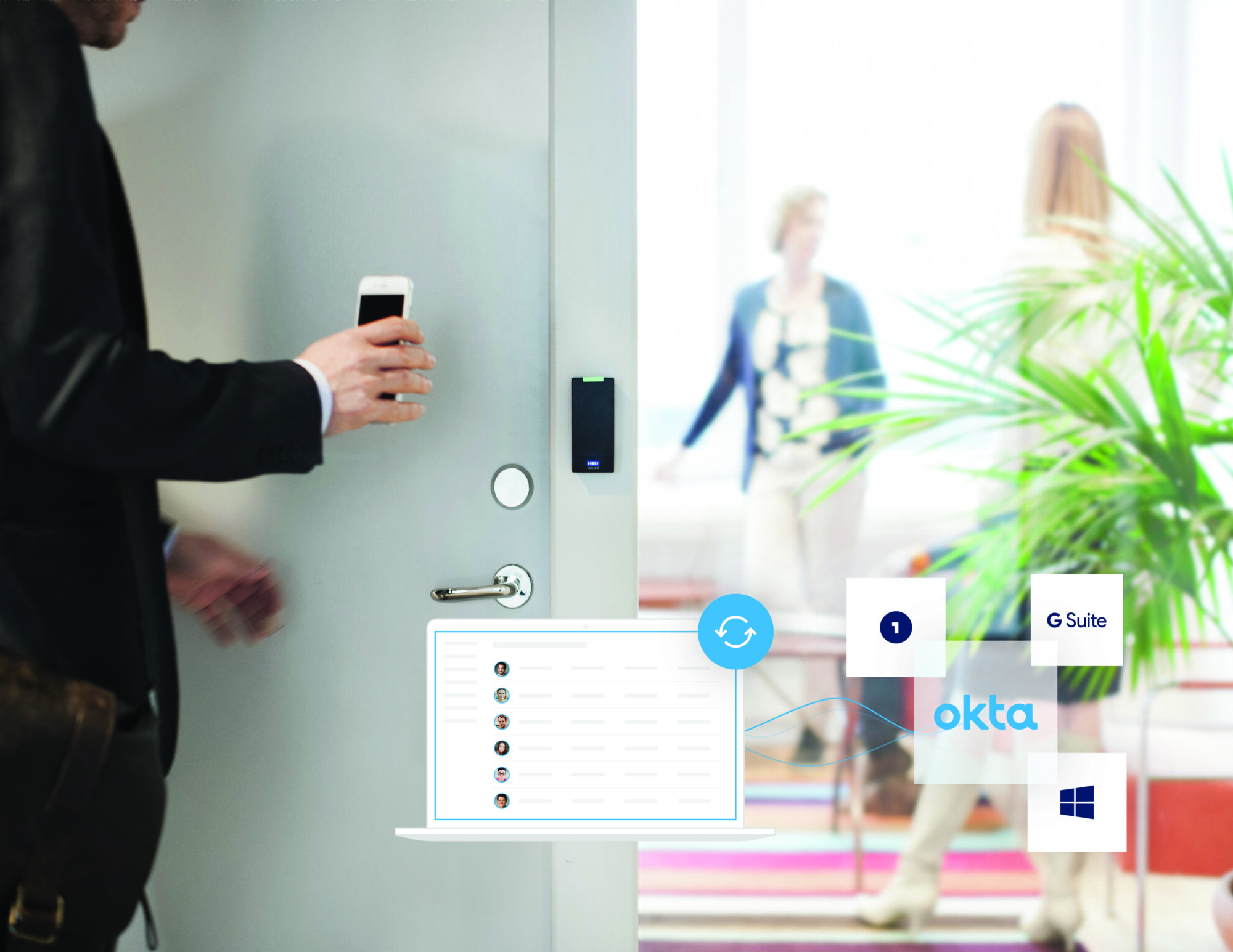It’s been one of “those” mornings. You slept through your alarms (all eight of them). Your dog, Fido, did his business inside. Rush hour traffic was terrible. And in three minutes, you’ll be late for an important meeting. You sprint to the building elevators and run smackdab into a group of people waiting. The elevators are running slow, again.
Let’s be real–the only time elevators get attention is when they: 1. Aren’t working or 2. Are taking FOREVER to arrive.
Luckily, elevator manufacturers like OTIS, ThyssenKrupp and Schindler have developed technology to optimize the tenant experience. When paired with Genea Security, multi-tenant buildings have found ways to operate more efficiently with elevator automation using API integrations.
However, commercial real estate (CRE) managers and various other property team members must take time to learn and budget for these technologies, which leads to the question: Are these technologies really beneficial?
Reduced Wait Times with Destination Dispatch
Elevator manufacturers have designed technology that more quickly gets tenants where they need to be. These systems are generally referred to as “destination dispatch.” They reduce the amount of time people spend waiting for an elevator and deliver riders to the appropriate floor more efficiently.
How Destination Dispatch Works
1. From the building lobby, tenants request travel to a particular floor using a mobile device, touch screen or key card.
2. Tenants are then directed to the appropriate elevator car.
3. The technology groups together tenants going to the same floor.
Though each elevator manufacturer has a similar objective, each system is a little different. Click here for more information.
Security Risks and Management
Commercial real estate teams benefit from happy tenants. Less traffic on the ground floor means less wait time at the elevators. Less wait time at the elevators means happier tenants. It sounds simple enough, but before you pour all your money into a smart elevator system, let’s look at how much work managing this requires.
Problem: Managing Multiple, Disparate Systems
Building teams are already managing access control, visitor management, utility systems, workorder systems, tenant engagement and more. The addition of smart elevators means managing an extra system. But when a smart elevator system is added to a building, it typically means CRE teams must:
- Manually add and remove users
- Set user privileges to multiple systems
- Security risks
So, how do property teams benefit from smart elevators?
Solution: Elevator-Access Control Integrations
Though installing a smart elevator system means an additional dashboard to manage, a workaround exists. The solution is API integrations. These Integrations join multiple systems within a common software dashboard. Above all, these systems can communicate and share information, resulting in a simplified workflow for property teams.

For example, at Genea, we often see customers integrating cloud-based access control with identity management software, like Okta. Integrations like these help building teams sync user credentials between the two systems. Integrations are beneficial for several reasons. They:
1. Eliminate redundancies among systems
2. Streamline adding and removing of users
3. Unify otherwise isolated systems
4. Narrow the focus of building teams and free up time
When a user swipes or taps into a building, their information from the identity management software will appear in the access control dashboard.
All well and good, but how do access control and elevator systems integrate? They work in a similar manner. When a user calls for an elevator using their key card or mobile device, an alert will populate in the access control dashboard. If the credential information sent from the mobile device matches the information that was entered in the access control and elevator dashboards, the elevator will take the user to the requested floor.
The integration allows security teams to easily see the movement happening within their building without having to open multiple applications.
How Genea Security Helps
Genea Security currently integrates with OTIS, Schindler and Braxos with others coming soon. In addition to the benefits listed above, Genea Security gives CRE teams the ability to assign elevator privileges based on their role. For example, if there is an executive-level suite, only those with the “VIP” label will be able to take the elevator to that specific floor. Role-based credentials can be customized to limited tenants to particular floors.
Integrating Genea Security with smart elevator systems means CRE teams can unify their complex systems and better safeguard the security of their buildings. For more information about our smart elevator integrations, contact a Genea Security expert.







